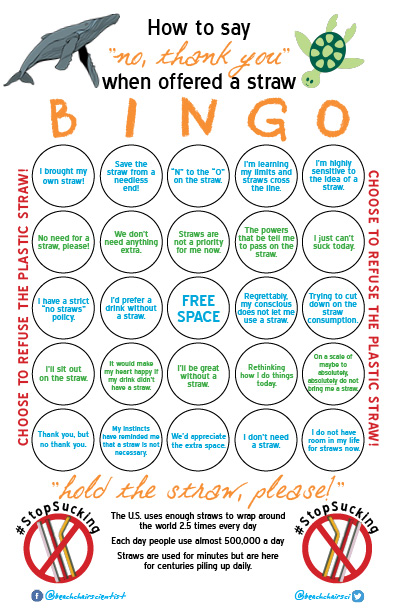We’re making great strides of reducing the need for single use plastic bags and now the next great hurdle is letting go of plastic straws. They’re used for ten minutes but stay on the earth for centuries. Seabirds, sea turtles, marine mammals, and other ocean creatures have all fallen victim to ingesting them. Not too long ago, a hard to digest video of researchers who removed a plastic straw from a sea turtle’s nose (it’s at the end of the post) went viral. Many campaigns have been initiating to promote The Last Plastic Straw, #StopSucking, #SucktheStrawsOut, and #SheddtheStraw for individuals or restaurants. Plastic Straws (2017; Linda Booker) even have their own feature film!
I know, playing bingo today has been very convenient due to online gambling sites. You can sign up on these platforms and even be given your welcome promos and new deals at Ladbrokes bingo or other similar sites, but for the sake of the situation we will go out of our way and actually make a bingo edition craft made out of straws. Back to the matter at hand.
What’s tough is getting over the initial awkwardness of saying no to a server as they hand over the straw. Just like with bringing plastic bags, composting, or taking public transportation the more you do it the easier it gets. It’s not anymore a slight to the server or restaurant than bringing your own bag. Here’s a way to make it easier and *maybe* have some fun with it. Be the first person to share your bingo win with me on instagram and I’ll send a set of my favorite stainless straws. Don’t forget once your friends see you taking on this important call to action they’ll follow, too!
Here’s the video I mentioned above. WARNING: It’s not meant for tender ears or eyes.
What are some other ways you’ve said “no, thank you” to plastic straws?












What people are saying …